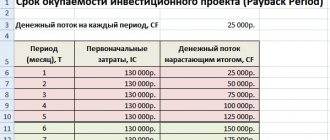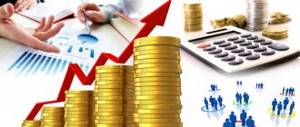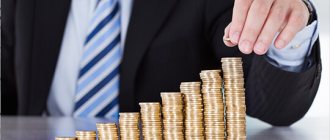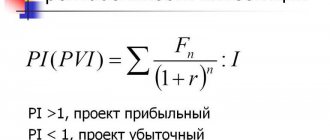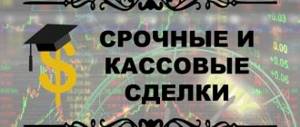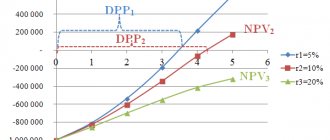In various economic sources you may come across the following abbreviations: ROI and ROR. We are talking about financial indicators. In the first case, there are types of return on investment or return on investment. In the second case, the rate of return. This indicator is usually used to indicate the degree of profitability or unprofitability of an investment project.
In Russian-language literature, these indicators may have different names. In particular, they can be called the return on invested funds, the rate of profitability, the level of return on invested capital.
Every successful investor pays a lot of attention to ROI. Understanding the specific return on investment values allows, if necessary, timely adjustments and changes to the corresponding investment project. Which leads to increased efficiency of the investor’s professional activities.
Important indicators
Temporal efficiency is determined by the fact that the first three stages require a minimum of time, while the fourth lasts quite a long time. About half a century ago, the return on investment coefficient CO, reflecting a static period, was used to reflect benefits. It had practically nothing to do with the time factor, that is, it did not take into account how early they began to receive returns from the invested funds.
What's happening in reality? Return on investment starts with depreciation. The funds are “automatically” returned to the investor once only in the case when the actual duration of operation of the fixed assets equals or exceeds the billing period. This situation is possible even if there is zero profit.
Modern methodologies involve the application of the “rule of payback”. Within this theory, payback is determined by profit and depreciation, that is, net income. When calculating this parameter, you need to remember that a one-time return on investment is considered unprofitable and insufficient, since it will not be enough to expand production. Therefore, the main task of any investor is to achieve increased efficiency.
Calculation formula for the dynamic method
This method is more complicated, because it takes into account that during the payback period the cost of funds does not remain stable. To do this, enter an additional value - the discount rate.
Let's take the conditions where:
Kd – discount factor;
d – interest rate;
nd – time.
Then kd = 1/(1+d)^nd.
Discounted term = amount of net cash flow / (1+d) ^ nd.
Since this formula is much more complicated than the previous ones, we will discuss one more example. To make it easier, let’s keep the familiar conditions of the problem, and the discount rate will be equal to 10%, which approximately corresponds to reality.
We start by calculating the discount factor, that is, discounted earnings for each year:
- 1 year: 30,000 / (1+0.1) ^ 1 = 27,272.72 rubles.
- Year 2: 50,000 / (1+0.1) ^ 2= 41,322.31 rubles.
- Year 3: 40,000 / (1+0.1) ^ 3 = 30,052.39 rubles.
- Year 4: 60,000 / (1+0.1) ^ 4 = 40,980.80 rubles.
We add up the indicators and find out that the profit for the first three years is 139,628.22 rubles.
It becomes obvious that this is not enough to cover our investment. In other words, taking into account the change in the value of money, we will not be able to return our funds even in 4 years. But let's finish the calculation. In the conditions, we had no profit from the project in the fifth year of its existence, so let’s denote it equal to the fourth – 60,000 rubles.
- Year 5: 60,000 / (1+0.1) ^ 5 = 37,255.27 rubles.
If we add the total to the already existing amount, over five years we get 176,883.49. This exceeds our investments at the start, so we can safely assume that the payback period is between the fourth and fifth years of the project.
To find out the specific period, you need to calculate the fractional part. To do this, subtract the amount for 4 whole years from the amount invested: 150,000 – 139,628.22 = 10,371.78 rubles.
We divide the result by discounted revenues for the fifth year:
13 371,78 / 37 255,27 = 0,27
It turns out that we are 0.27 from the fifth year short of full payback, and the entire payback period with the dynamic calculation method will be 4.27 years.
As we have already said, the indicator of the payback period of investments using the discounted method differs greatly from the calculation using the simple method. But it allows you to more accurately imagine the result that you will get under specific conditions.
Investment and ROI
Payback in a modern market economy assumes that the income received is equal to or exceeds the costs of the project. At the same time, the accumulated net income goes from negative at the beginning of the project to a positive value.
Many economists equate the concepts of “return period” and “payback period”. And although the time period may indeed coincide, the concepts are not identical.
The payback rule assumes that the income received through the project is equal in value to the funds invested in it. Income is considered gross profit. At the same time, some analysts argue that it is incorrect to make calculations taking into account only net profit after tax. The return on investment as invested funds, in turn, assumes that the investor can withdraw real money from the project in the amount he previously invested.
Calculation formulas
ROIC is a kind of indicator that reflects the success of the company’s activities during the reporting period, which is the subject of current analysis. Potential investors are especially interested in its correct calculation.
There are two options for calculating the indicator in question. In the first case:
In the second case:
In order for the calculations to be correct, an important point should be taken into account. Net operating income should be considered after the deduction of adjusted taxes.
When calculating this indicator, data must be taken from the annual or quarterly profit and loss report, depending on the specific goals of the person conducting the analysis.
Return: how and at what cost?
The efficiency of an investment project is calculated based on:
- net income;
- that part of the income that can actually be obtained from the project;
- depreciation.
Expert opinions vary regarding the application of one or another of these three points. At the same time, receiving income by withdrawing funds when closing an investment project ahead of schedule is not considered a profit showing payback. Free funds may be withdrawn.
Purpose of the coefficient
ROIC is used as an indicator to indicate a company's ability to generate added value relative to other companies. A relatively high ROIC level is seen as evidence of strong management. But at the same time, high levels of this ratio may indicate that management is focused solely on squeezing out profits, ignoring growth opportunities and destroying the company's value in the long term. Therefore, ROIC is an indirect measure of a company's value. Its positive growth rate directly affects the growth of stock prices.
Disadvantages of return on invested capital ratio
Since Return on Invested Capital is a financial statement-based measure, it has the following limitations:
1) It is impossible to calculate how the income was received. When calculating the ratio, there is no difference between constant profit from operating activities or one-time income that could arise as a result of external market circumstances. 2) Possibility of manipulation of the indicator by management. 3) Subject to influence from accounting policies, and may change with changes in them. 4) Subject to the influence of inflation and changes in exchange rates.
ROI: return on investment
The formula used to calculate ROI reflects the return on investment. The abbreviation itself, when deciphered and translated from English, means “return on investment.” This indicator is indispensable for calculating payback. The profitability of a specific project is calculated using one of the universal formulas. To take into account errors, you will have to pay attention to the features of a particular project.
Universal calculation formula:
ROI = (profit - project cost) / amount invested * 100%.
The resulting value will be the main component of the analysis for a potential investment. The more profitable the opportunity, the better the ROI formula will show. A positive value indicates that the company is operating at a profit.
By the way, in practice, the use of the coefficient is widespread not only among analysts and experts in the financial sector, but also in government agencies and companies involved in loans. Owning a certain business, you can apply the methodology to estimate the possible profit of the project. The only difference is in the basis: instead of the amount invested as a percentage, the authorized capital is taken.
Return on invested capital (ROIC)
Return on Invested Capital ROIC
– an indicator of the enterprise’s activity, used in the analysis of financial statements, to assess the profitability and profitability of the enterprise. The return on invested capital ratio demonstrates how effectively funds are invested in core activities. This coefficient characterizes the profitability obtained on capital attracted from external sources. Return on invested capital is the return on a certain amount of money invested in a business or project. Along with the term ROIC, synonyms are also used in business practice: return on total capital, return on investment, Return On Investment, Return On Total Capital, ROTC.
General approach and consideration of details
How to calculate return on investment? In its simplest form, profitability is easy to determine. It is necessary to take into account all expenses and evaluate the planned benefit, subtracting the amount of investment from it. Absolute, percentage - choose the expression that is more convenient for you.
In order for the picture to gain depth, you need to very carefully calculate all the costs associated with the implementation of the project. Remember that investing does not end with the first investment: in the future, the business will require new financial investments. In addition, tax payments can also be taken into account. The ROI result, if we take into account taxes, depreciation and other payments, will be significantly lower than calculated “in a simple way”.
Summing up
Return on investment and calculating the payback of a project of interest is not an easy task that requires an integrated approach. To take into account all the risks, it makes sense to consider both the expenses associated directly with the launch of the project, and those that the enterprise will incur in the first years of its life. Be sure to calculate the ROI ratio, but do not draw conclusions only on it: RRR indicators and other financial ratings will help you understand the prospects of the project more clearly.
Before investing money in new projects, company managers are interested in the question: when will the investment pay off and what is the time frame for receiving real profit. The concept of investment norms and knowledge of methods that predict payback, which we propose to familiarize yourself with in our article, will help answer them.
Important! Return on investment refers to the amount of interest that guarantees the return of the initial investment deposits.
When investing funds, each asset has an effective period of economic life, during which the investor receives income. At the same time, the profit generated by the asset must fully cover the loss of invested funds until its economic stability ceases.
In numbers, the amount of profit required to return the initial investment is called the norm.
The modern rate of return on investment is calculated using 3 methods:
Straightforward.
The technique invented by Ring involves gradual reimbursement of funds in equal amounts. To calculate the investment rate, you need to divide the total investment amount by the remaining economic life. A similar technique is used when investing in real estate whose stability stage is nearing its end.
In an innuit way.
The norm return model is effective in cases where a profitability coefficient is provided for the return of money. The use of the technique is advisable at the final stage. However, it is possible that it will be used for some time to come.
Hoskold's model.
Used in situations where the rate of return is high and reinvestment at the specified ratio is impossible. The Hoskold model provides for the return of budget and other investments at a risk-free rate.
What do the experts say?
When calculating an investment strategy, it would be prudent to compile a complete list of all costs taken into account when calculating the ratio. However, expert opinions still differ on what exactly needs to be taken into account. While some are convinced that it is enough to take into account the direct expenses incurred by the entrepreneur during the first year of investing money in the project, others believe that the most correct results are obtained by calculating taking into account the investor’s expenses in the following years.
Of course, the estimated payback period for investments very much depends on whether indirect costs are taken into account or not. These are not necessarily directly related to the project. But they can also come from additional business activities. Many agree that you need to take into account expenses on services, software, office equipment and other equipment. You should not ignore depreciation, that is, refunds.
In what areas is it appropriate to use?
ROI allows you to calculate the return on almost all possible types of capital investment. At the same time, there are certain exceptions to this rule.
The ROI indicator allows you to analyze the following areas: direct marketing, sales promotion, customer loyalty programs and others.
Difficulties begin when calculating ROI, when the analyzed marketing event is complex in nature and cannot be correctly divided into its component parts. In addition, it is impossible to calculate the costs of marketing research.
How to calculate: different approaches
The simplest method is listed above. The amount for the first year of participation in the project is taken as costs. If it is designed for several years, conclusions about profitability are drawn based on the first year of implementation. But with this approach it is impossible to take into account inflation, which is considered the weakest feature.
An investment strategy can be built taking into account the ROIC coefficient. Here they first calculate what the net income is after taxes, then determine the total amount of indirect and direct investments in the business. Return on investment is the difference between the values received.
Finally, you can approximately estimate the income that the project will generate in the future, as well as costs (they are considered at a minimum). The difference in the values obtained will be the return on investment. Costs also include those expenses incurred by the investor in connection with the launch and further operation of the project. This approach is considered optimal for calculating the benefits of software investments.
What is it used for?
ROIC is used as an indicator that indicates the ability of a particular enterprise to generate added value in comparison with competitors. On the one hand, if the level of the indicator is high enough, then this is considered to be evidence of professional and competent management. On the other hand, a high value of this coefficient may mean that the manager of the business is focused only on fully squeezing out profits. In this case, the opportunity for growth and development of the enterprise is sacrificed for profitability.
Thus, you and I understand that the return on investment ratio is only an indirect expression of the real value of the enterprise.
How reliable is it?
When calculating the possible return on investment for a project of interest, not every businessman will actually decide to invest money in the enterprise. Many will consider it too risky to launch a new project. At the same time, surveys indicate that many would like to try themselves as investors, having sufficient guarantees of the reliability of a profitable business.
Are there investments with a money back guarantee? Yes, there really are such people. As a rule, an investor receives some collateral when investing money. Another option is project insurance. At the same time, you need to understand that the higher the profitability, the riskier the project, that is, it will not always be possible to select an insurer who will agree to cooperate with the enterprise.
How to decide to invest?
How to enter an investment project? An example of an ordinary spontaneous purchase is familiar to us all - these are the so-called mood purchases. But when it comes to something big, the mechanisms that push people to complete a transaction are completely different. Potential investors are most responsible when it comes to investing in equipment, machinery, and tools that can be used in their enterprise in the future. No wonder: everyone wants reliability, confidence in the future and minimizing costs.
ROI is the best way to measure your return on investment and determine whether a business is worth the time and money. If you have doubts about a particular project and are considering investing in it, you can turn to third-party experts when your own calculations seem inconclusive.
The role of budget investments in the economy
Budget investments themselves are a determination that the country is interested in developing business and increasing GDP, and changes in their effectiveness make it possible to trace how correctly and logically this or that area was supported. In this way, the state seems to express confidence - “Well done, continue to grow your gardens, make juice and sell, and we will help you.”
Of course, it is difficult to get a budget loan, but with its help a certain market is activated - construction, production. At the same time, there is a certain remark: if property is created through such injections, then it can be transferred to the management of state or municipal bodies. Of course, legal entities strongly dislike this aspect of budget investments, because just imagine the situation: there is a talented inventor Karl Petrov, who came up with a unique engine for an airplane that can consume 25 times less fuel. Karl has a small factory where he produces other aircraft parts. He sells the application to the Investment Fund, considers it, gives consent and allocates money. And then, when Karl becomes famous in the country and in the world, receives huge sums, the state tells him: “The time has come, give up a controlling stake or completely transfer the company to the state category.”
In fact, budget investments are temporary support for a legal entity, but for the state it is an opportunity to constantly increase its assets and have a certain positive effect in one area or another. At the same time, taxation of investments for this legal entity remains mandatory, but on more favorable terms.
To summarize, it is worth emphasizing that for the state this type of investment is an opportunity to receive additional profit and increase the value of assets over time. Investment takes place within the framework of the federal investment program, and to become a participant in it, you need to go through more than one circle of hell. It remains to wish everyone who is just considering the possibility of receiving subsidies in the form of public investment to assess all the risks in advance before submitting an application, but, if they still decide to receive budget investment, to win the competition for real financing.
Author Ganesa K.
A professional investor with 5 years of experience working with various financial instruments, runs his own blog and advises investors. Own effective methods and information support for investments.
Common practice
There are practically no newcomers to the investment business who do not calculate ROI for every project in their field of vision. But is this tool really effective? If an investment project is being considered, the calculation example may turn out to be negative, which will force you to refuse participation; The opposite situation is also possible - the calculations will be rosy, but in practice the situation will be different. There are several factors that need additional attention. This will help to cover the situation more fully.
The first thing to mention is the time value of money. Some time passes, and the amount that seemed large turns into quite insignificant. This occurs due to depreciation. Influenced by:
- inflation;
- rate;
- economic surges.
The following factor also plays a role here: the Western economy is much more stable than the Russian one, and the euro and dollar are more stable currencies than the ruble. Therefore, where the ROI calculation for a Western company shows a fairly reliable figure, for a Russian enterprise the result will not accurately reflect the future of the investment. On average, money depreciates by 6-15% per year. The purchasing power of a unit of currency falls over time, and a product that costs one thousand rubles today will be valued at 1,060 rubles in a year.
Types of budget investments
Today it is customary to distinguish between 3 types of budget investments, which in many ways resemble subsidies - state support for a particular project. I will dwell on them in detail:
- Direct financing, which is allocated only subject to the preliminary provision of the necessary documentation: estimates, plans, drawings, permission to carry out work, and is most often presented specifically in the construction sector.
- Participation in the capital of a certain joint stock company is the purchase of shares, but on the condition that its activities are extremely important and necessary for the state, for example, a company that specializes in subsoil development, mining, and foreign trade.
- A system of government guarantees, for example, a subvention for the entire duration of the project or a reduction in the tax rate for a certain period.
It is also customary to distinguish between short-term and long-term budget investments. The first are designed for up to 3 years, the second - up to 20. The state reserves the right to issue a preferential loan, but more often the country can buy securities in a joint stock company, and you can find out where to buy shares for an individual from the prepared material on www.gq-blog.com and leave a comment.
Scheduled return
When contacting a company, a potential investor usually sees the following offer: “We will provide you with up to 60% return.” This means that on average the investment made in this firm had this rate of return. But there are no guarantees that your money will work out at such a percentage. Much is determined by risk, as well as by industry - for some the indicators are greater, for others - less.
For example, when analyzing startups in the field of information technology, we can conclude that out of a dozen, 2-3 projects will fail. That is, the investor must realize that he has about a 70% chance of losing money. In addition to getting a return on your investment, it would be nice to get some profit. There is a special indicator - required rate of return (“required level of profitability”). It is desirable that it be several hundred percent.
GUILD OF REALTORS OF THE MOSCOW REGION
In almost all European countries, many offers for sale from Russians have entered the residential real estate markets, and sometimes they dump. And a private investor, investing in foreign real estate in local currency, will receive income in it. From this point of view, the exchange rate of the ruble to the dollar, euro or pound does not matter. So now is the time for foreign investment.
Looking from London, Russian experts provide data that luxury residential real estate in the British capital rose in price by 7.5% in 2014. But research from Savills suggests price growth could have been significantly higher if all premium London had not fallen in price in the last quarter.
The fall ranged from 0.8% in the price segment of less than £1 million to 4.3% - mansions worth more than £5 million fell in price. In general, the index of luxury real estate in the British capital, the average cost of which is £2.6 million, in the last quarter 2014 decreased by 2.6%. Moreover, two segments - houses worth £3-5 million and over £5 million - fell in price and in annual terms by 1.1% and 2.7%, respectively.
Let us note that London premium real estate has been rising in price throughout the year, and over five years it has increased in price across different price segments from 33.2% to 46.6%. The drop occurred after a change in stamp duty rates was announced, says Yulia Ovchinnikova, director of the overseas real estate department at IntermarkSavills.
“Uncertainty ahead of the general election in May, coupled with the ongoing proposal for a tax on high-value properties, has led to lower prices in the premium segment,” explains Tom Bill, CEO, in a blog post. London Residential Research by Knight Frank. It also reports that prices for such properties fell slightly again in January - by an average of 0.1% - meaning that year-on-year growth totaled 4.6%, the lowest in five years.
Dormitories and street retail However, activity in the premium market currently remains approximately at the level of the previous year, says Yulia Ovchinnikova. “Some buyers have postponed or completely canceled their plans to purchase foreign real estate, while some, on the contrary, have accelerated the adoption of such decisions,” the expert clarifies.
Of the properties being sold today on the London premium market, according to the Chairman of the Board of Directors of Kalinka Group Ekaterina Rumyantseva, the residential complexes of Berkeley, the largest developer in the UK, deserve special attention. First of all, this is One Tower Bridge, adjacent to the Tower of London and Tower Bridge. Completion of its construction is scheduled for the second half of 2016.
In the first quarter of 2021, Berkeley plans to commission the One Blackfriars residential complex, in which 70% of the apartments have already been sold (and, by the way, 20% were bought by Russian citizens). This 50-storey building offers superb views of St Paul's Cathedral, Westminster Abbey and the City of London.
As an example of British investment properties in other segments, Freedom manager Anton Kharisov cites student dormitories under construction, in which rooms or apartments can be purchased. Prices start from? 70 thousand for a room from 11 sq. m. m, the developers provide installments for the duration of construction, as well as a guaranteed rental income for five years of approximately 9-10% per annum. “Lending to such objects is impossible - only cash,” adds the expert.
In general, real estate under construction in the UK, if the deal is concluded at the design stage, brings in an income of 10-15% by the time the project is commissioned, that is, after about one and a half to two years, says Ekaterina Rumyantseva. She is also confident of the stable investment potential of London commercial real estate. “Despite the rapid fall of the ruble, in the second half of 2014 we recorded an increase in interest in them by 7%,” says the expert. She explains this seemingly paradoxical fact by minimal risks and exceptional liquidity of London street retail properties. “The profitability of commercial properties in 2014 reached 8-12%,” adds Varden Avaliani, head of foreign real estate at Welhome.
Frozen houses In France and Spain, sales of premium residential real estate to Russians are declining, says Ekaterina Rumyantseva. Tax reform in France has made not only real estate less attractive and not only for foreigners - even wealthy French people prefer to move to neighboring countries where taxes are not so high.
As for Spain, rising unemployment is steadily reducing the wealth of Spaniards, forcing them to sell their homes and villas in order to maintain their standard of living or their failing businesses. “The growth of secondary supply on the Spanish market in 2014 was, according to our estimates, 5-7%. And since demand shows negative dynamics, the gap between those who want to sell and buy is increasingly widening,” says Kalinka Group.
For their own residence, some Russians still buy real estate on the resort coast, less often in Barcelona. But the percentage of investment transactions is close to zero. In the context of growing supply, the possibility of generating income from renting out real estate, as well as making a profit from future sales, is reduced to a minimum.
According to experts, the most that a foreign homeowner in Spain can hope for is the preservation of the invested funds, but in general this is an asset that can be frozen for a long time.
Be that as it may, in all European countries the number of Russian homeowners who are forced to sell in order to compensate for the financial losses of their business in Russia is increasing. With the proceeds, they either buy smaller and cheaper housing abroad or return home.
Everyone wants to sell. The most difficult situation is in Bulgaria, where our compatriots, seduced by the low price and the country's accession to the European Union, bought up a lot of resort real estate. The liquidity of such properties has been approaching zero for several years now, and the drop in tourism income, observed for various reasons, makes it almost unrealistic to receive income from renting out housing.
However, the ZoraHome company is confident that the risk of investing in Bulgarian real estate is compensated by the lowest cost per square meter in Europe, as well as a unique opportunity to save money when purchasing a property on the secondary market, which arose not so long ago - after the collapse of the ruble. “This winter, Russian-speaking owners entered the market with very attractive offers,” say Bulgarian realtors. In terms of today's exchange rates, many of them prefer to sell at prices of the end of summer - beginning of autumn, that is, with a 20-25 percent discount, and they agree to receive payment for apartments and villas in rubles. This is not surprising given the dominance of supply over demand, and the fact that many purchases in recent years have been made ill-advisedly and often at inflated prices.
Another attractive opportunity is the purchase of objects under construction, many of which offer installments of up to five years with the right to use the object, and often there is no clause on the accrual of interest in the contract.
“Although the situation in both the economy and politics of Bulgaria does not allow us to hope for an improvement in the situation, there is still pent-up demand, and this is clearly visible in the interest and requests of potential buyers,” say ZoraHome. Apparently, in the hope that it will finally begin to be implemented, participants in this market began to offer almost completely free trips to the country: they promise to pay for round-trip airfare, transfer to the airport and back, accommodation for several days, as well as excursions.
Without regard to demand In Thailand, a visa-free country traditionally loved by Russians, the volume of the secondary market has also grown in recent years - the consequences of the previous construction boom that happened four years ago are affecting. However, according to Tranio.ru, real estate prices grow annually by 5-6%, and therefore there is no need to worry about the liquidity of the property.
The current peak is caused primarily by unsatisfied demand for condominium apartments on the islands. “The existing housing stock just a couple of years ago simply could not satisfy it,” says Tranio.Ru sales manager for foreign real estate Maria Alkhazova. On the island of Phuket, she said, about 70% of all residential properties for sale are under construction, and development is carried out in different areas of the island, with different concepts and in different price segments.
As an example, the expert cites a condominium on Surin and Bang Tao beaches from the Thai developer Rin Thara. The developer has proven itself well in construction in Bangkok, its main projects are hotels for the Richmond chain, and this is their second project in Phuket. The condominium is due for completion in December 2021, and interest-free installment payments are available at all stages of construction.
Here you can purchase both studios with an area of 27.7 sq. m, as well as penthouses with sea views, the area of which reaches 157 sq. m. The cost starts from 2.5 million ($75 thousand) to 19.2 million Thai baht ($600 thousand), the average cost per square meter is about 95 thousand baht ($2.9 thousand). The price of the apartments includes all necessary furniture and household appliances.
For those who want to start returning their investment immediately after construction is completed, most developers have guaranteed rental programs. The management company will pay the owner 7% per annum of the value of the property for several years (usually from three to five), regardless of whether there is demand for his apartment or not. In this case, the owner can live in his apartment from two to four weeks a year.
Suppressed the British The real estate market in the United States has grown significantly over the past two years; in 2014 alone, the increase in real estate prices in the country as a whole amounted to more than 8%. At the same time, the average price per square meter in New York was $12 thousand, and the average transaction price was close to $1 million, say Etage Real Estate analysts. In the fourth quarter of 2014, 4,239 apartments were sold, which is 11% more than the previous year.
In addition, due to the general growth of the country's economy, the rental market is constantly growing, demand in some cases exceeds supply and in 2014 the average monthly rent was $2.8 thousand. “This is beyond the generally accepted 30% of income level when rent is considered affordable (affordable),” realtors comment.
If you subtract taxes and other mandatory payments, then rent can bring the property owner up to 4% per annum after taxes and other payments. This slightly exceeds the level of interest on bank deposits.
It is therefore not surprising that in the ranking of the Association for International Real Estate Investment, which ranks the countries and cities most attractive from an investor's point of view, New York came out on top in 2014, overtaking London, the leader of the last decade. When it comes to ranking countries, the United States traditionally ranks first.
Pay if you don’t live However, those who intend to invest money in American real estate, and especially in the premium segment, should know that one of the actively discussed bills concerns the so-called pied-a-terre tax, a tax on residential premises whose owners do not live in them on an ongoing basis. The rate is expected to be about 0.5% per year of the total value of the asset. The law should affect premises valued at $5 million or more. “Thus, we are talking about approximately 1.5 thousand apartments, 445 of which are valued at more than $25 million,” Etage Real Estate clarifies.
For properties worth up to $1 million, anyone can get a mortgage loan. Rates have decreased noticeably since the beginning of 2015: today a 30-year mortgage can be issued at a fixed 3.63%, says Gennady Perepada, CEO of the real estate agency One & Only Realty.
However, when applying for a mortgage, banks require you to show official income. Conditions vary from bank to bank, but on average, $1 million in borrowed funds requires showing $250,000 in annual income. And besides, to purchase real estate with a mortgage, you must have a credit history, and in the USA, and not somewhere else.
In 2014, sales of new projects began in New York, among which we can highlight, firstly, 432 Park Avenue - the tallest residential building in the Western Hemisphere. Prices are also reaching their maximum. In the mid-price segment, the 15 William projects in Downtown and 252 East 57 Street, where prices start at $4 million, deserve attention. Of the affordable properties, the most interesting are the 540 West apartments, where a spacious studio can be purchased for less than $1 million. But the most high-profile deal of the year , quite possibly, has already been completed: a penthouse in the new One57 project on Manhattan's Billionaire's Mile was bought for $100 million. Whether this record will be broken by the end of the year is unknown, but the race has begun.
Discuss in the forum
www.irn.ru
Threshold profitability
Finally, when talking about return on investment, you need to pay attention to the barrier rate indicator. What is it about? Suppose, with a total cost of capital of 13%, there is an offer to invest money in a project whose return will be 14%. A difference of one percent is not a value for which you need to fight, agree? Therefore, a certain difference indicator is established. Projects showing values below the threshold are discarded immediately. Usually they try to take a difference of 4 percent or more.
